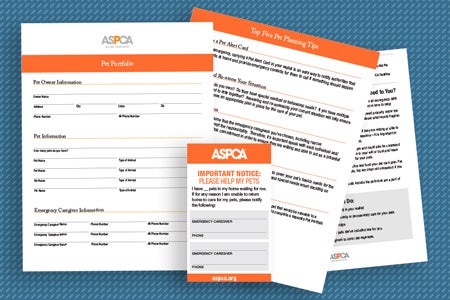
Pet Trust Primer

Those of us who think of our companion animals as family members are aware of our responsibility to these dependent creatures. It is important to make sure that their care and comfort continue uninterrupted should we become incapable of caring for them ourselves. One way to plan for that contingency is to set up something called a pet trust. To help you decide if this may work for you, here are some basic definitions and guidelines to keep in mind:
What is a Pet Trust?
A pet trust is a legally sanctioned arrangement providing for the care and maintenance of one or more companion animals in the event of a grantor’s disability or death. The “grantor” (also called a settlor or trustor in some states) is the person who creates the trust, which may take effect during a person’s lifetime or at death. Typically, a trustee will hold property (cash, for example) “in trust” for the benefit of the grantor’s pets. The trustee will make payments to a designated caregiver(s) on a regular basis. The trust, depending upon the state in which it is established, will continue for the life of the pet or 21 years, whichever occurs first. Some states allow a pet trust to continue for the life of the pet without regard to a maximum duration of 21 years. This is particularly advantageous for companion animals whom have longer life expectancies than cats and dogs, such as horses and parrots.
Why a Pet Trust?
Because most trusts are legally enforceable arrangements, pet owners can be assured that their directions regarding their companion animal(s) will be carried out. A trust can be very specific. For example, if your cat only likes a particular brand of food or your dog looks forward to daily romps in the park, this can be specified in a trust agreement. If you want your pet to visit the veterinarian four times a year, this can also be included. A trust that takes effect during the life of the pet owner can provide instructions for the care of the animal(s) in the event the pet owner becomes incapacitated (sick, injured, comatose, etc.). Since pet owners know the particular habits of their companion animals better than anyone else, they can describe the kind of care their pets should have and list the person(s) who would be willing to provide that care.
Doing Your Homework
In addition to providing the name and address of a trustee and successor trustee, a caregiver and successor caregiver, (all of whom can be corporations and/or individuals) you will be asked to provide enough information to:
- Adequately identify your pets in order to prevent fraud, such as through photos, microchips, DNA samples, or alternatively, by describing your pet as a “class”—in other words, as “the pet(s) owned by you at the time of your illness/death”;
- Describe in detail your pet’s standard of living and care;
- Require regular inspections of your pet(s) by the trustee;
- Determine the amount of funds needed to adequately cover the expenses for your pet’s care (generally, this amount cannot exceed what may reasonably be required given your pet’s standard of living) and specify how the funds should be distributed to the caregiver;
- Determine the amount of funds needed to adequately cover the expenses of administering the pet trust;
- Designate a remainder beneficiary in the event the funds in the pet trust are not exhausted;
- Provide instructions for the final disposition of your pet (for example, burial or cremation).
Pet trusts can offer pet owners a great deal of flexibility and peace of mind. See our State Laws Chart for more details on pet trusts in your state.

